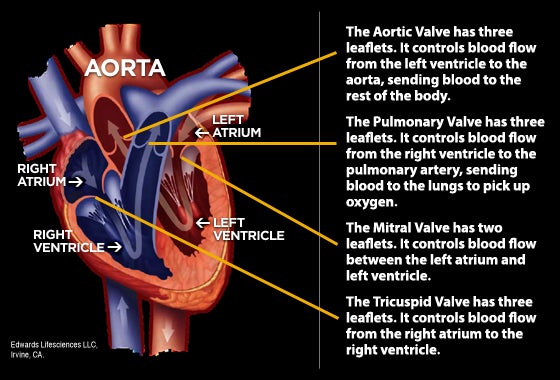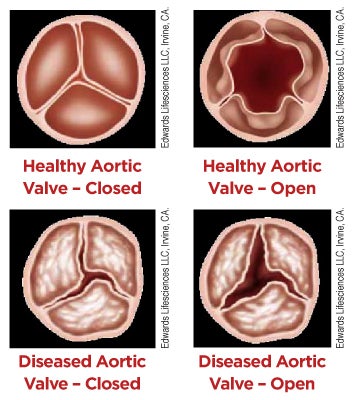The heart is a muscular organ located in your chest between your lungs. The heart is designed to pump blood through your body. The right side of your heart pumps blood through the lungs, where the blood picks up oxygen. The left side of the heart receives this blood and pumps it to the rest of your body. The heart is divided into four chambers—two upper (called the left and right atrium) and two lower (called the left and right ventricle). The heart has four valves: the tricuspid (tri-CUSS-pid), pulmonary (PULL-mun-ary), mitral (MI-trul), and aortic (ay-OR-tik) valves.

NOTE: The left and the right side of the heart is pictured as the heart sits in your body.
Each time your heart beats, it pumps blood through these valves by contracting (squeezing) its chambers. These valves open in one direction, like one-way gates, allowing blood to flow forward. In between beats, the heart’s chambers quickly relax, and its valves close, preventing blood from flowing backward.
Heart valve disease occurs if one or more of your heart valves don’t work well. Birth defects, age-related changes, infections, or other conditions can cause one or more of your heart valves to not open fully or to let blood leak back into the heart chambers.
 Two common problems can develop in heart valves:
Two common problems can develop in heart valves:
Stenosis - your valve becomes stiff and narrow and does not completely open because of things like a build-up of calcium (mineral deposits), high cholesterol (a waxy fat), age, or genetics (such as a birth defect)
Severe aortic stenosis is a very serious problem. Without treatment, half of the people who feel sick from this problem die within an average of two years.
Regurgitation - your valve does not fully close and allows blood to leak backwards through the valve.
With either condition, your heart must work harder and may not pump enough oxygen-rich blood to your body.
